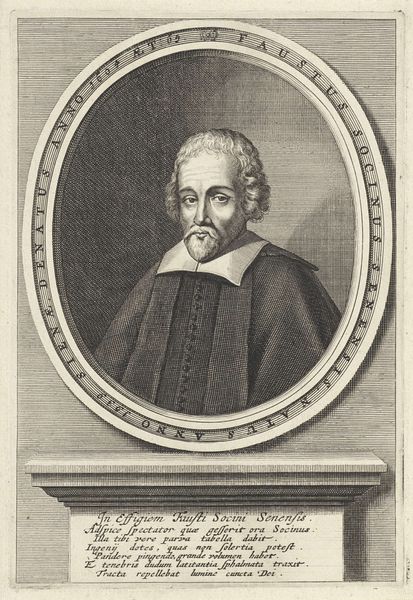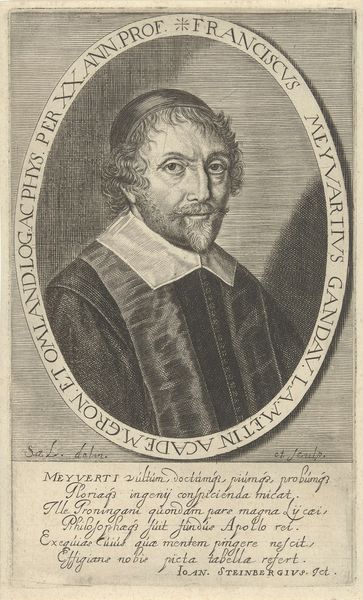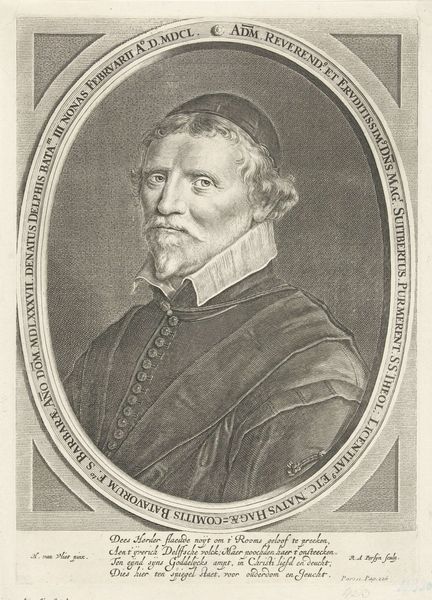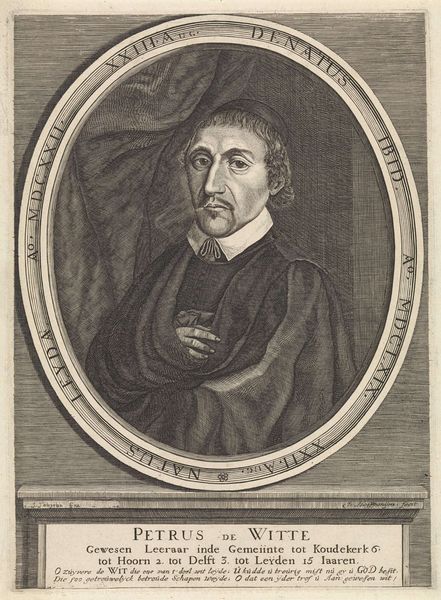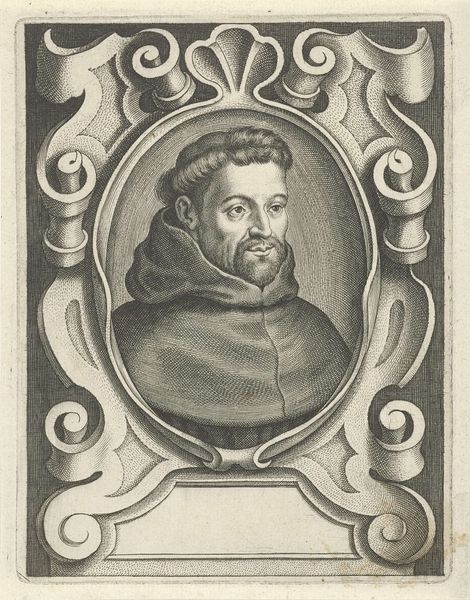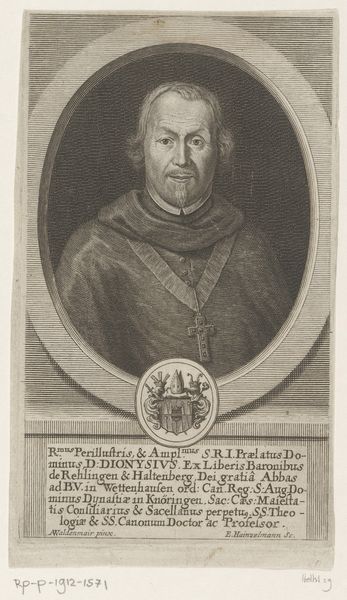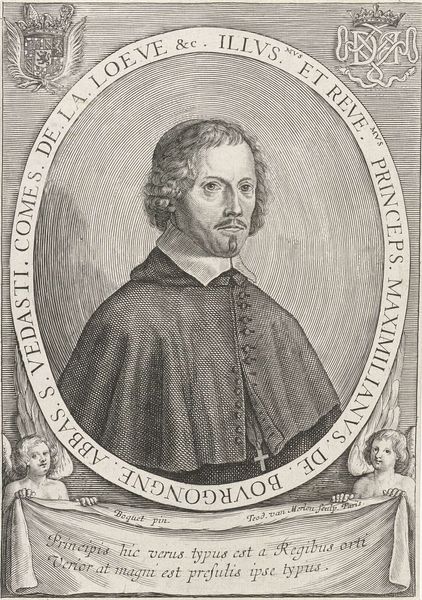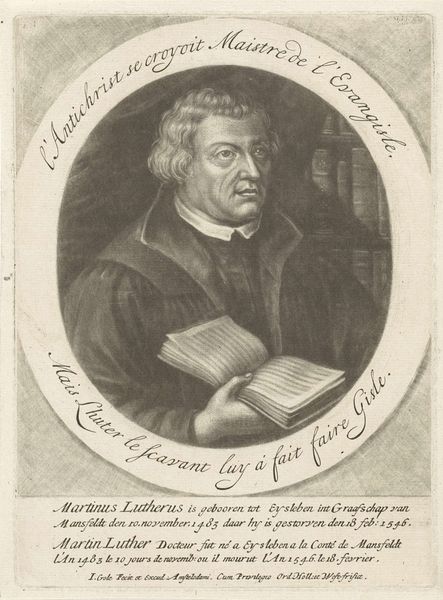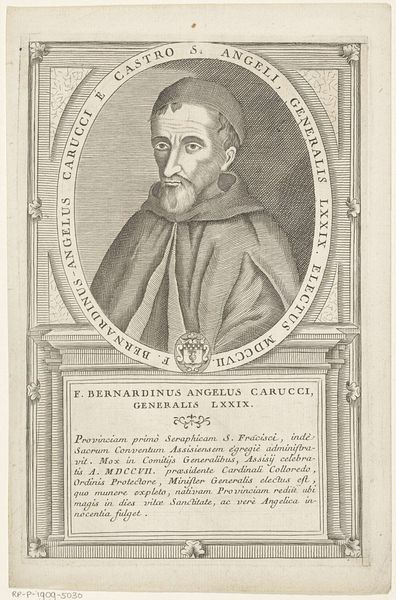
print, engraving
#
portrait
#
baroque
# print
#
book
#
history-painting
#
academic-art
#
engraving
Dimensions: height 249 mm, width 183 mm
Copyright: Rijks Museum: Open Domain
This portrait of Philipp Melanchthon was made by Pieter Schenk, likely in the late 17th or early 18th century. It's an etching, a printmaking process that relies on acid to bite into a metal plate, in this case likely copper. The plate is then inked and printed onto paper. Looking closely, you can see how the etched lines create a network of shading, defining Melanchthon’s features and clothing. The texture of the paper also plays a role, catching the ink and adding depth to the image. Etching, a skilled and time-consuming process, was a key technology of image production at this time, allowing for the wide dissemination of portraits and other subjects. The choice of etching speaks to a desire to efficiently reproduce this notable figure. While a painting might immortalize an important individual, the printmaking process allowed for distribution of his likeness, and thus ideas, to a wider audience. It blurs the lines between art object, commodity and agent of social change.
Comments
No comments
Be the first to comment and join the conversation on the ultimate creative platform.
